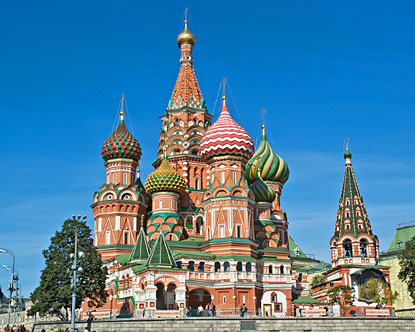
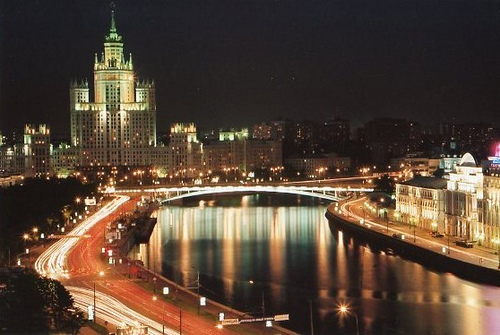
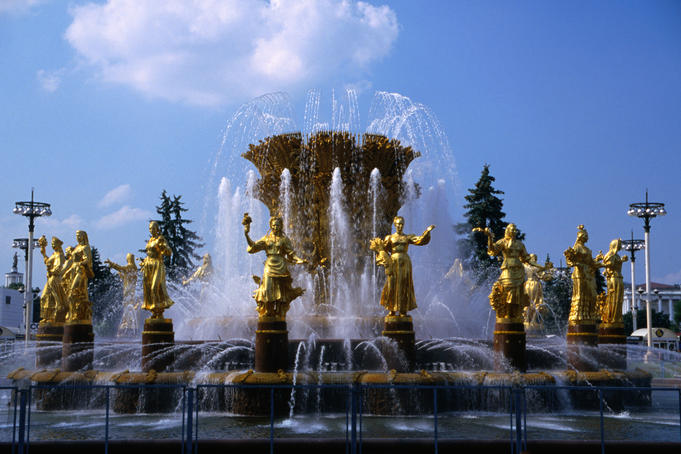
Click on the picture above to learn more about Moscow.
Pictures and facts about Moscow
Moscow is the capital of Russia. It is the biggest city in Europe. Moscow population is 10.5 million. Statistic says that Moscow population is expecting to be 16 millions by 2020. Amount of native Muscovites (4th generation let’s say) are less than 2% from Moscow population. 3 million people relocated to Moscow for last 20 years. Amount of Russians became less - from 90 to 84% for last 20 years. Part of Ukrainians decreased as well from 2.8% to 2.4%; same for Belarusians (from 0.8% to 0.66%) and Jews (from 2% to 0.7%). But part of Armenians and Georgians is increased for 3 times, Azeri increased for five times. Overall amount of people from Northern Caucus increased for ten times, but their part in Moscow population is 1%. Besides that there are 300 thousand people from China, Afghanistan, Vietnam, Serbia and Turkey.
There is a big myth about brutally cold weather in Moscow, Russia. This is not correct. The climate is temperate. In October the still-mild temperatures are more likely to occur than severe cold. February and March are the best months to see Russia covered with snow. Summers are gorgeous, and in June it stays light until nearly midnight.
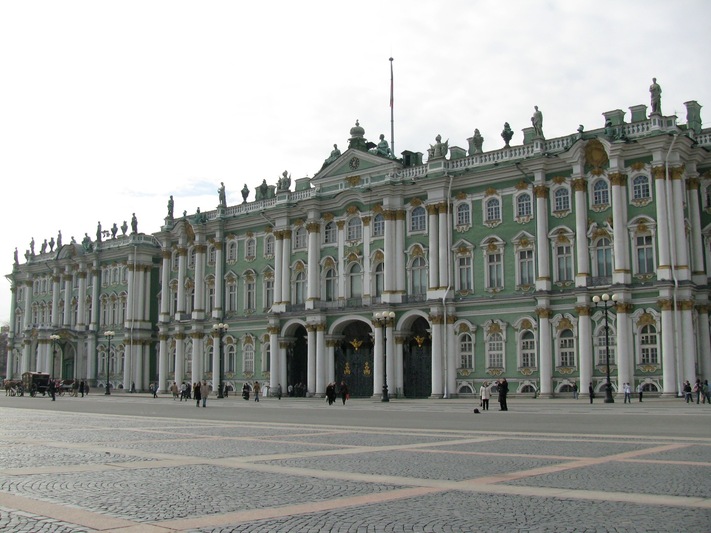
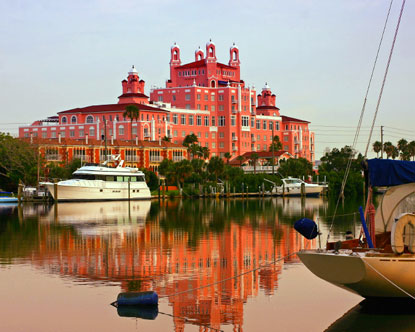
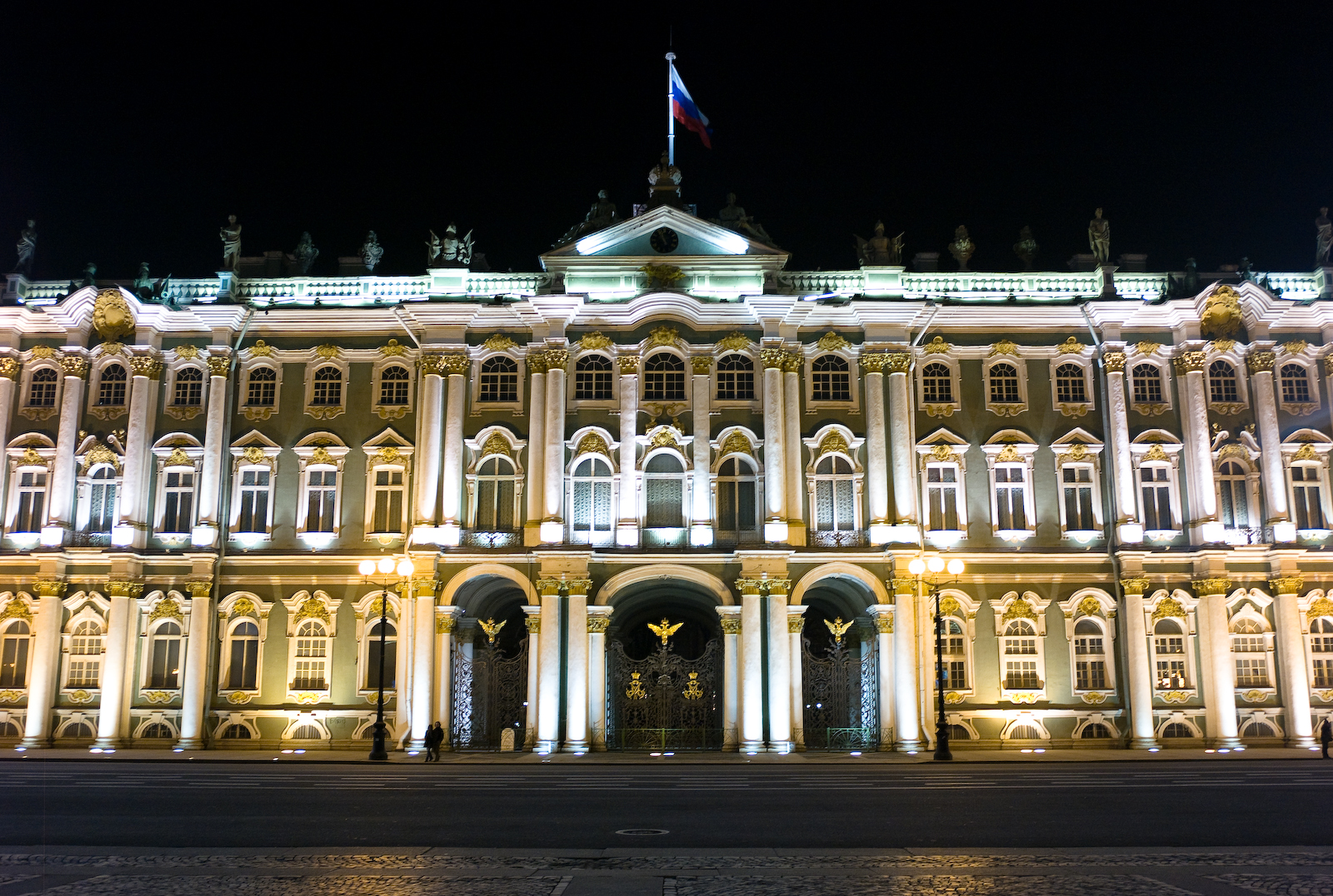
Click on the picture above to learn more about St. Petersburg.
Pictures and facts about St. Petersburg
The second capital of Russia is St.Petersbursburg (former Leningrad). The minor planet Leningrad discovered in 1968 is situated 220 million kilometers from the city.Saint-Petersburg had 3 different names in its history. Originally the city was named after St Peter, the patron of the city, and this name was used for 211 years, until August of 1914 when the First World war began. Then the city got à Russian name, Petrograd ( the city of Peter). After the death of Lenin in January 1924 the city was named Leningrad, and finally in 1991 the original name, Saint-Petersburg, was restored. It’s interesting that those who were born in soviet times still have Leningrad as the place of birth in their modern passports. Saint-Petersburg was the capital of Russia from 1712 to 1918.
The population of Saint-Petersburg is approximately 4,8 million people. It’s the second largest city in Russia, and the most northern city in the world with population over 1 million people.
The main river of the city is the Neva. On the whole, there are about 93 rivers and canals in modern Petersburg, their total length is 300 km. It’ s not surprising that the city is often called the Nothern Venice. What is more, there used to be 101 islands in the delta of riverNeva, but now this number decreased to 42. “Koryushka” (êîðþøêà) or smelt is the most popular and traditional fish in Saint-Petersburg. It’s a seasonal fish that is sold only in spring. The traditional “Koryushka festival” takes place in the middle of May on Zayachiy island in the center of St Pete.
Saint-Petersburg has one of the deepest metros in the world – on average, the stations are situated 60-70 meters beneath the ground. For example, Proletarskaya metro station is 84 meters deep! And some escalators are more than 150 metres long!
Go to my "Bioinformatics" page or "Introductory" page or "Private" page